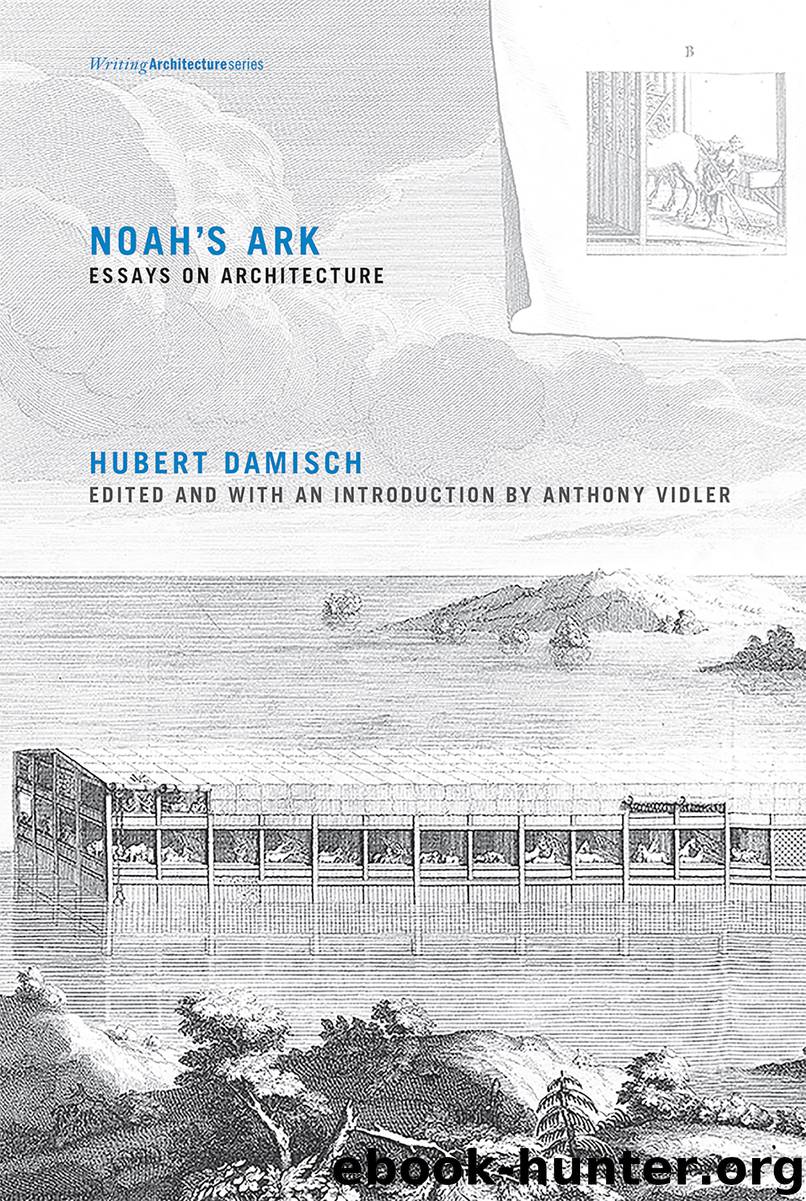Noah's Ark by Damisch Hubert; Vidler Anthony; Rose Julie & Anthony Vidler & Julie Rose

Author:Damisch, Hubert; Vidler, Anthony; Rose, Julie & Anthony Vidler & Julie Rose
Language: eng
Format: epub
Publisher: MIT Press
Published: 2016-03-31T04:00:00+00:00
10.1
Le Corbusier, La Tourette, Éveux-sur-l’Arbresle, France, 1953–1960. La Tourette as seen from the road approaching the monastery. Photo: Hubert Damisch.
10 Against the Slope: Le Corbusier’s La Tourette
La Tourette: A Theoretical Object
Why La Tourette? And why La Tourette today? Nearly half a century has passed since Le Corbusier drew up the plans for this Dominican monastery in the foothills of the Lyonnais Mountains overlooking the small town of L’Arbresle, twenty-five kilometers northwest of Lyon, and many things have changed since it was consecrated in 1959. The building was originally intended to house about one hundred young brothers who were to reside there for several years while completing their intellectual training, yet now all pedagogical activity has ceased and fewer than ten or so monks occupy the place. Even the bids to open the institution to the outside world and to offer the resources of the buildings for accommodation and a center for so-called cultural encounters and exchanges seem to have suddenly fizzled out for the time being, and it is not easy to imagine what other new role could be assigned to the buildings. Reyner Banham held as a criterion of architectural excellence the possibility that a building could be used for entirely different purposes than those for which it was originally designed; we are not yet there with La Tourette. However, the daily flood of coaches filled with architecture students of every nationality is enough for us to ask once more: Why La Tourette? And why La Tourette today?
The critics have not really found an answer to this question. On the contrary, they avoid it; they are anxious to assign La Tourette its place in history, as much as within Le Corbusier’s oeuvre as to measure its impact at the end of the twentieth century within the short-term perspective of, say, “new brutalism.” However, rather than a “historical monument” or “national treasure,” La Tourette seems to be simultaneously a milestone and a model, both equally and strangely contemporary and topical in a way that has nothing to do with style. As is the rule in any phenomenological endeavor, we cannot fully measure this idea except by provisionally putting in parentheses—and provisionally not questioning—a number of theses and concepts that keep recurring in architectural history and criticism, including the writings of Le Corbusier himself.
La Tourette is a milestone in the sense that paying attention to such a late work of Le Corbusier may be of help when looking at some recent developments in architecture, and it is a model in the epistemological sense of the term, which lends itself to varied applications in relation to current issues—but first of all, it is an object. More to the point, it is a “theoretical object,” a notion that we must construct and whose operation we must also untangle, with one important reservation: among the objects we come to know and eventually put to heuristic or speculative use, the architectural object has a distinctive feature, because in its very being as an object
Download
This site does not store any files on its server. We only index and link to content provided by other sites. Please contact the content providers to delete copyright contents if any and email us, we'll remove relevant links or contents immediately.
Kathy Andrews Collection by Kathy Andrews(11345)
The remains of the day by Kazuo Ishiguro(8419)
Paper Towns by Green John(4815)
Spare by Prince Harry The Duke of Sussex(4807)
Industrial Automation from Scratch: A hands-on guide to using sensors, actuators, PLCs, HMIs, and SCADA to automate industrial processes by Olushola Akande(4636)
The Body: A Guide for Occupants by Bill Bryson(4603)
Machine Learning at Scale with H2O by Gregory Keys | David Whiting(3670)
Be in a Treehouse by Pete Nelson(3654)
Harry Potter and the Goblet Of Fire by J.K. Rowling(3620)
Never by Ken Follett(3551)
Goodbye Paradise(3464)
The Remains of the Day by Kazuo Ishiguro(3148)
Into Thin Air by Jon Krakauer(3137)
The Cellar by Natasha Preston(3081)
The Genius of Japanese Carpentry by Azby Brown(3045)
Fairy Tale by Stephen King(2976)
120 Days of Sodom by Marquis de Sade(2947)
Drawing Shortcuts: Developing Quick Drawing Skills Using Today's Technology by Leggitt Jim(2943)
The Man Who Died Twice by Richard Osman(2824)
